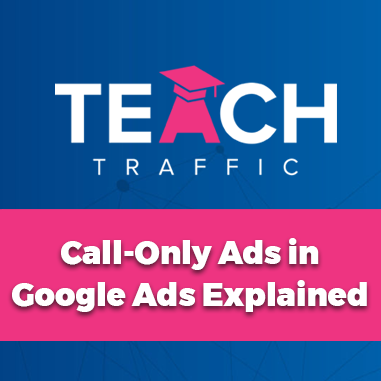What Are Call-Only Ads in Google Ads?
Powered by Embed YouTube Video
In this article, I’ll explain call-only ads and share my different perspective on them. I’ll also show you how to create one and reveal live results from a Google ad account.
Call-only ads are designed for mobile searches. When someone searches, say for a dentist, the ad that pops up includes a call button and the phone number right in the headline.
Clicking the ad doesn’t take you to a website; instead, it prompts you to make a call. What I find challenging about call-only ads is that when people click on them, they often expect to visit a website, leading to costs for that click.
Even if they cancel the call, you’ve still paid for that click. In industries with high cost-per-click rates like plumbing, especially in the U.S. where it can exceed $70 or even $100 per click, your budget can quickly deplete. People might inadvertently click on your ads or click, thinking they’ll land on your website, only to cancel the call immediately.
This can rapidly exhaust your daily or even monthly budget. I just want to caution you about this aspect of call-only ads.
However, despite these drawbacks, call-only ads do have their purpose in the digital landscape. Right now, I’ll demonstrate how to create one.
Here I am, inside a live Google Ad Account, navigating directly into a search campaign, then into an ad group, and accessing the ad section. To create a call-only ad, simply click on this plus button:
and then clicking on call ad:
Now as you can see below, it has pre -populated some of the information.
Unfortunately, I have had to blur out sensitive data.
This is an example of what it will look like: notice the prominent call option displaying the phone number, which I’ve obscured for privacy reasons. It’s a way to alert visitors that clicking will directly initiate a call instead of redirecting to a website.
So here is where you put in the phone number that you want the ad to connect to.
It’s recommended to include a final URL so that it appears in the ad. This ensures that the final URL is displayed for the audience
And then you go about and write the headlines and descriptions as you like, you’ll see here that we have two headlines, each of 30 characters, we’ve got our business name, and then two descriptions of 90 characters as well.
You’ll see that I have already set up call conversion tracking, you definitely want to do this.
So you will be able to monitor whether these calls are actually converting which we have set up.
Now I’m going to show you the results of a call only campaign which may shock you.
Here we are in the same ad group, split testing a regular expanded text ad alongside a call-only ad. I want to acknowledge that there are significantly different levels of impressions and clicks between them.
And Google has been favoring the responsive search ad.
But you know, the call only ad did get some impressions and clicks and here is exactly what I don’t like about them for most people is it did get six clicks that cost these clients almost $70.
Additionally, it hasn’t generated any conversions. This occurred because, as I mentioned earlier in the video, when someone clicks on the ad and the prompt appears on their phone, the client still incurs the click cost. If the person then clicks ‘cancel,’ it’s essentially a waste of money.
It’s crucial to be crystal clear in your ad copy—make it explicit that clicking means speaking to someone immediately. This helps inform users accurately. Ensuring they understand they’re initiating a call rather than visiting a website can prevent unnecessary spending without any actual outcome.
So, that sums up my take on Google Search call-only ads.
